I'm a Trainer and These 4 Standing Exercises Help Flatten Your Stomach After 50

As we age, keeping our midsection firm becomes increasingly challenging. After decades of helping clients transform their bodies, I've developed a set of standing exercises specifically designed for those over 50. These moves will help you reclaim your core strength without requiring you to get down on the floor. Try these four effective exercises that can fit into any schedule and start seeing results in just weeks.
Why Your Body Changes After 50

After 50, people naturally experience a slower metabolism, hormonal shifts, and decreased muscle mass – all contributing to the challenge of maintaining core strength and a flat stomach. These natural changes make burning calories more difficult, often leading to weight gain, particularly around the abdominal area. Additionally, core muscle fibers around the abdomen shrink and become more flexible with age, especially without regular strength training.
Why Standing Exercises Work Better For You

Standing exercises are particularly beneficial because they incorporate balance and stability training while working the core. Unlike other workouts, these exercises are more functional, replicating everyday movements that require core strength. They can also be easily modified for various fitness needs – making them accessible for a wide range of ability levels.
Exercise 1: Standing Side Crunches For Your Obliques
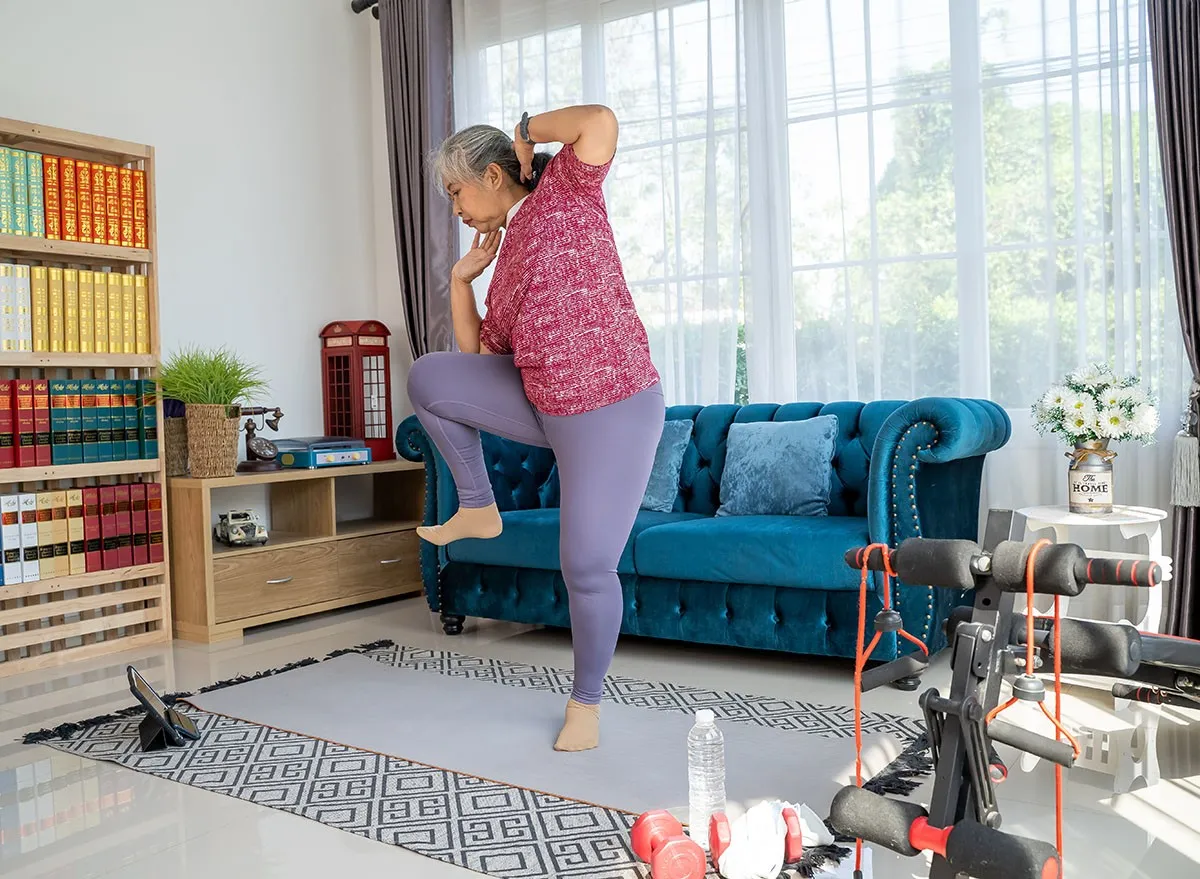
Proper form: Stand with your feet shoulder-width apart. Interlock your fingers behind your head. Engage your core and bend one elbow to the hip on the same side. Stand back up straight and repeat with the opposite side.
Recommended routine: Perform two to three sets with 10 to 15 reps each, aiming to do this exercise two to three times per week.
Target muscles: This exercise specifically targets the oblique muscles to help with rotational movement and core stability.
For beginners: Focus on controlled movements rather than speed or depth of the bend. You can also start on a bench for added support while you work towards a standing workout.
Make it harder: Increase the range of motion, add resistance bands or medicine balls, or utilize an unstable surface to stand on. You can also try standing bicycle crunches or standing knee tuck extensions.
Exercise 2: Wood Chops To Power Up Your Core
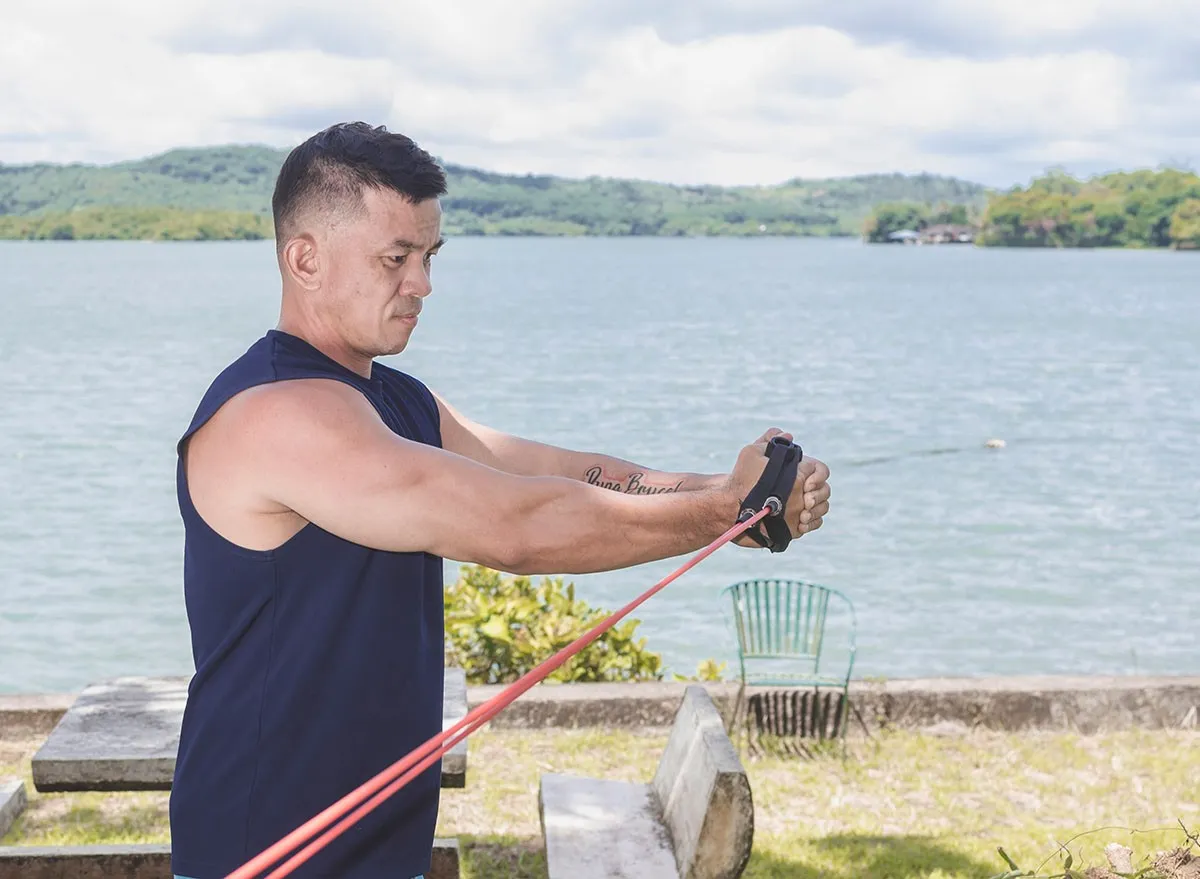
Proper form: Stand with your feet hip-width apart with a slight bend in your knees. Hold a medicine ball in both hands next to one hip. Swing the ball on a diagonal angle towards the opposite angle with your arms straight. Raise the ball until it's above your shoulder with a slight pivot on the opposite foot. Extend the ball in the air over your shoulder until your legs are straight, then bring it back down to the starting position. Repeat on the opposite side.
Recommended routine: Perform this exercise two to three times per week with three to five sets of eight to 12 reps per side.
Target muscles: Wood chops work the obliques and transverse abdominis as the motion forces them to stabilize and create rotational force during the diagonal movement. By twisting against resistance, the muscles work both to move and to stabilize – making this effective for building rotational strength and power.
For beginners: Focus on controlled, slow movements with lighter weight. You don't need to go through the full range of motion at first – work your way up to it.
Make it harder: Try heavier weight, add resistance, incorporate a squat or lunge, or speed up the motion for more challenge.
Exercise 3: Crossover Toe Touches For Total Core Control
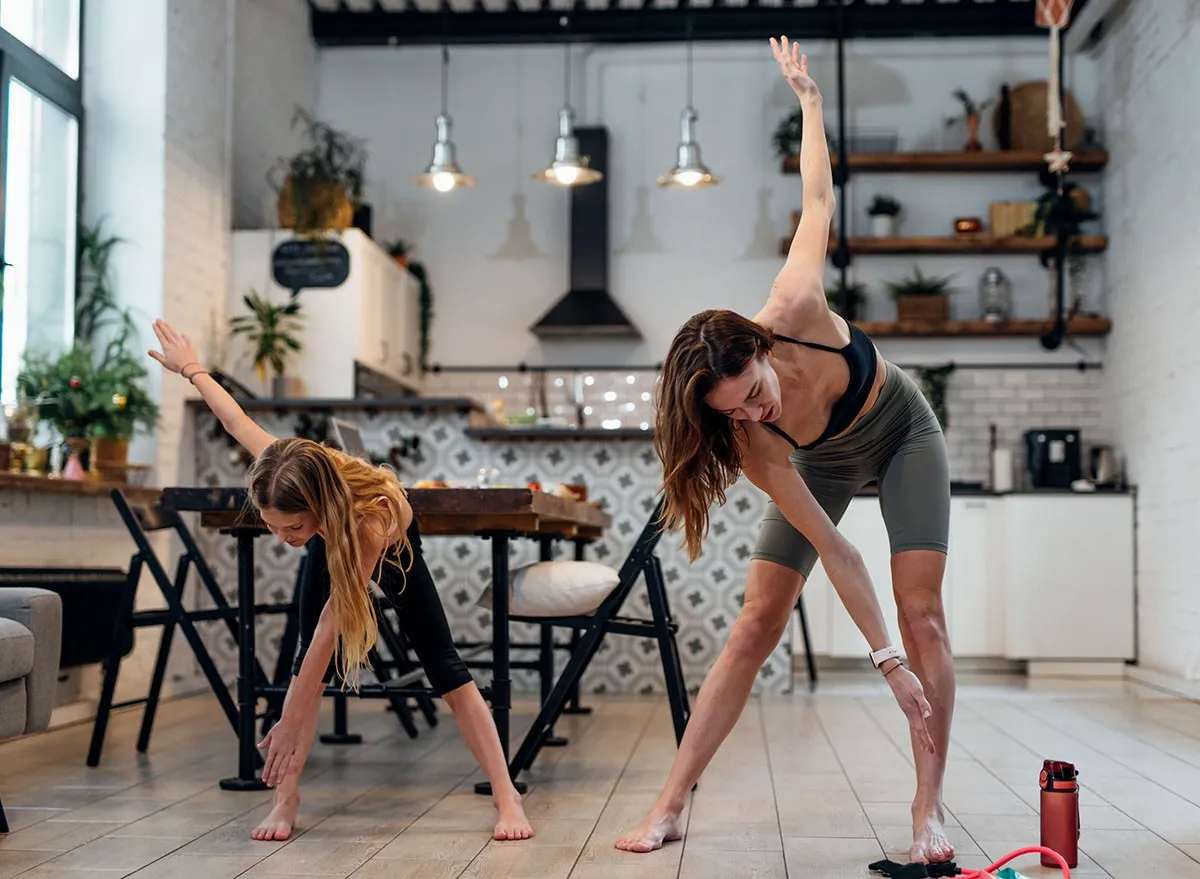
Proper form: Stand with your feet shoulder-width apart. Place your arms straight out to your side at shoulder height. While keeping your legs and arms straight, take one arm and reach across your body to the opposite leg. Bring it back to the start position and alternate arms with each repetition.
Recommended routine: Do this workout two to three times a week with two to three sets of 10 to 15 reps.
Target muscles: Crossover toe touches challenge your core's ability to control rotation and maintain stability through dynamic movement. It requires the body to twist and stabilize by engaging the core muscles and obliques.
For beginners: Reduce your range of motion and add a slight bend in the knees.
Make it harder: Add resistance, incorporate dynamic movements, or modify your stance by widening it.
Exercise 4: High Knees To Activate Your Deep Core
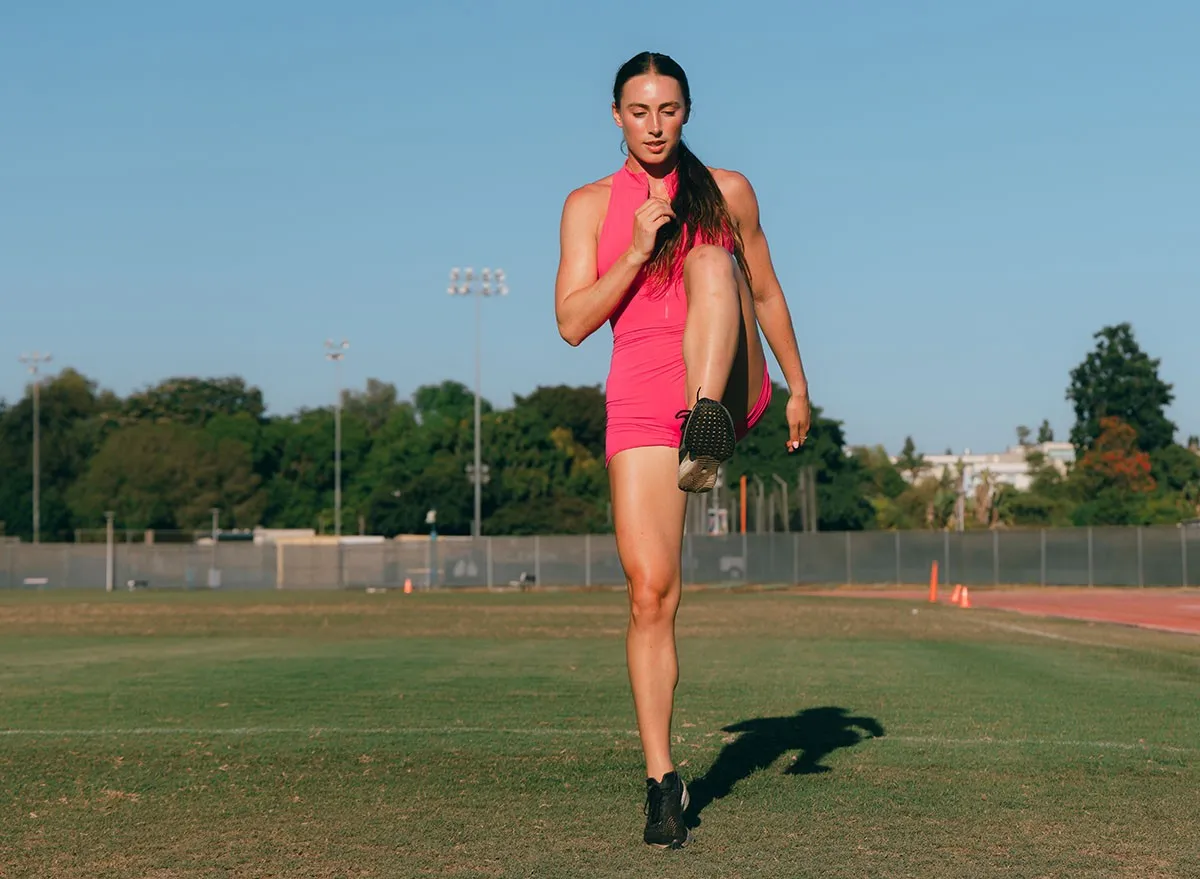
Proper form: Start with your feet hip-width apart. Drive one knee up towards your chest. Swing the opposite arm up at the same time like a running motion. Drop the knee back down and repeat with the opposite leg and arm. Increase the speed as you get more comfortable with the motion.
Recommended routine: Perform high knees three to four times per week with three sets of 12 to 20 reps per leg. Add in 30 to 60 seconds of rest per set.
Target muscles: This exercise primarily targets your transverse abdominis and obliques, along with the rectus abdominis, by requiring them to stabilize your body.
For beginners: Slow down your speed and treat this workout like you are marching or walking in place.
Make it harder: Increase your speed, knee height, and duration of the exercise. Another way to make this more challenging is by holding a weight or wearing a resistance band during your workout.
Support Your Exercise With These Healthy Habits

Healthy supporting habits are just as critical as the exercises themselves. Complement your workout with proper protein intake to support muscle growth and recovery, while complex carbs and healthy fats help to fuel and recover post-workout. Additionally, hydration will increase performance and reduce fatigue.
Knowing when to slow down and recover plays a factor in repairing and strengthening your muscles. Pre-workout should include dynamic stretches such as leg swings and torso twists, and post-workout stretching should be static stretching like lateral reaches and hamstring stretch.
On off days, practice active recovery with light walks, stretching, or yoga to maintain mobility and blood flow. Lastly, add in complementary movements to avoid imbalances and give you well-rounded results.
When You'll Start Seeing Results
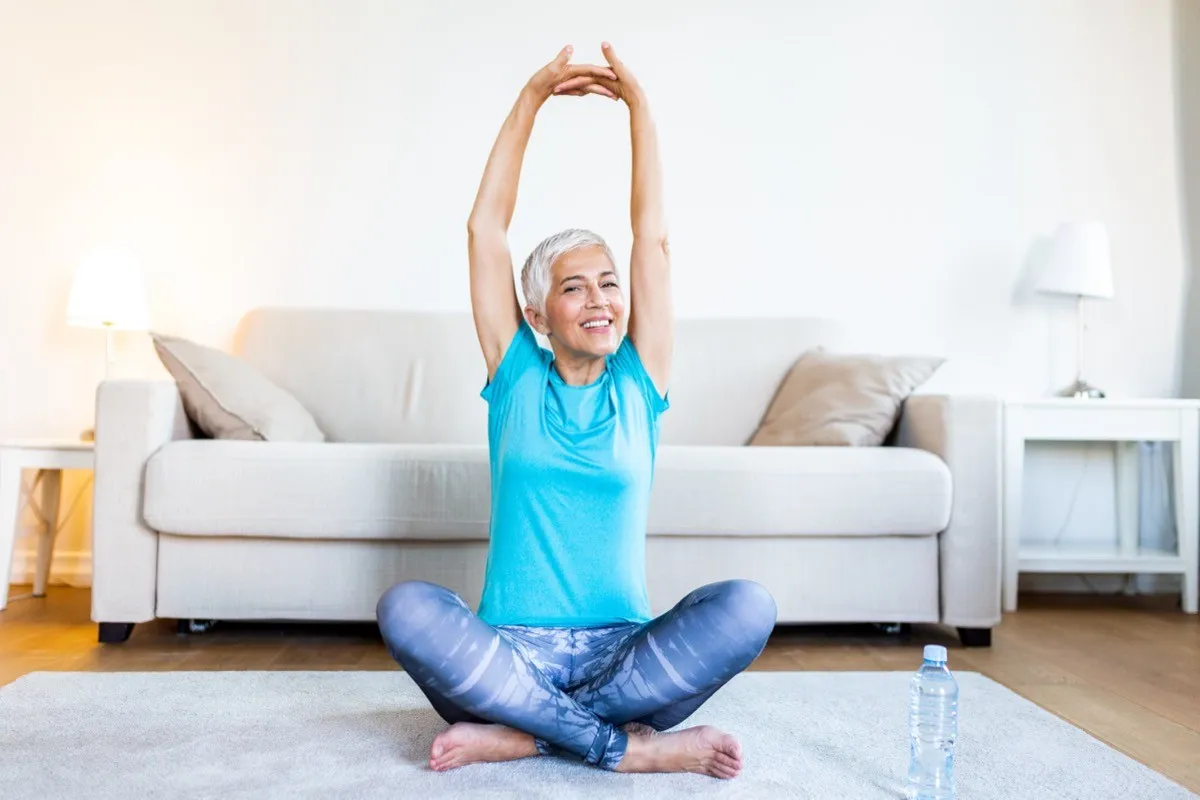
By consistently performing these exercises, you can expect to see changes within two to three weeks. Around the eight-to-12-week mark is when there will be significant visible changes to muscle definition.
Avoid These Common Mistakes

When it comes to flattening your stomach, the two biggest common mistakes are overexertion and using the wrong muscles. Switching to standing exercises can aid in providing controlled movements to focus on, while also incorporating core engagement, minimizing muscle strain, and maximizing muscle activation. And if you enjoyed this article, don't miss 12-3-30 Walking Method: 20 Proven Tips to Lose Weight Faster.




